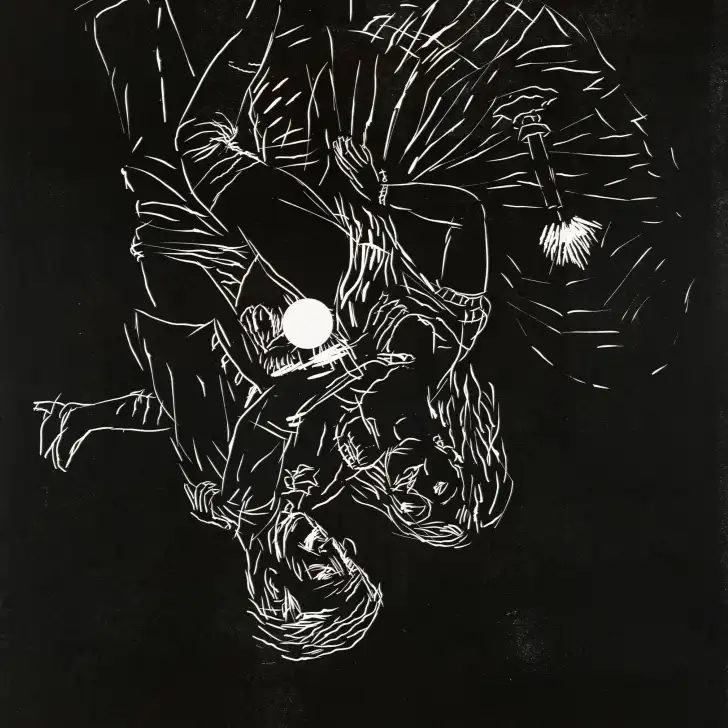In a bold exhibition in London, Georg Baselitz reimagines 19th-century erotic lithographs as monumental linocuts. Baselitz, known for his penchant for outrage, turns the images upside down, infusing them with both technical brilliance and conceptual wit.
Belle Haleine not only celebrates Baselitz’s 85th birthday but also underscores his ability to triumph over provocative subject matter. The linocuts embody Baselitz’s belief that art has the capacity to elevate the baseness of life into the sublime.
Baselitz’s monumental prints each exceed two meters in height. Reminiscent of Picasso on schnapps, they showcase the passionate precision of his drawing. Assigned individual titles, each print in the series incorporates either an art historical reference or an enigmatic phrase.
For example, “Moustache le soeur” (2002) alludes to Duchamp’s readymade, where he added a mustache to a postcard reproduction of the Mona Lisa. Similarly, “Das Modell von Balthus” and “La nuit mit Marie” (2002) reference a muse and model who posed multiple times for the mid-twentieth-century artist Balthasar Klossowski de Rola.
Baselitz opted to create these images using linoleum, a flexible material that facilitated working on a monumental scale with ease. In a process closely aligned with the execution of his paintings, he placed the large sheets on his studio floor, directly carving into the surface with swift gestures and without any preliminary drawings.
Far from mere explicitness, the ten linocuts exude sensuality through the artist’s precise drawing style. As a printmaking history authority, Baselitz integrates Renaissance chiaroscuro techniques, employing deep shadows to juxtapose desire with the night of death. He champions the transformative potential of hand-drawn art.
Baselitz strategically places a white circle in each scene, not as an act of self-censorship but as an abstract intervention, introducing an element of mystery. This deliberate choice prompts viewers to engage in a contemplative dialogue, inviting interpretations that extend beyond the explicit imagery. In doing so, Baselitz transforms the viewer’s experience, encouraging a nuanced exploration of the intricate relationship between desire, mortality, and the enigmatic allure of art.
Featured Image: Georg Baselitz La nuit mit Marie (2002). Source: Cristea Roberts Gallery



